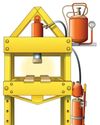
Jason Norsworthy and researchers at the University of Arkansas System Division of Agriculture have found a potential nonchemical option for growers to diminish the distribution of weed seed to the soil using harvest weed seed control (HWSC) mainly from narrow-windrow burning.
Weed control programs need to shift toward strategies that use nonchemical approaches in conjunction with current herbicide programs if herbicides are to continue as a sustainable and effective option for growers.
Commonly used in Australia, narrow windrow burning poses a viable option to growers for commons weeds including barnyardgrass, hemp sesbania, Italian ryegrass, johnsongrass, Palmer amaranth, pitted morningglory, prickly sida, sicklepod, and velvetleaf.
An experiment was conducted at the Altheimer Laboratory in Fayetteville, Arkansas, to determine the temperature and duration needed to kill the weed seeds listed. Viability was initially determined for the seed of each weed species. Seed samples were then placed inside a high-fire kiln and subjected to 20 combinations of temperature and durations.
この記事は Successful Farming の December 2023 版に掲載されています。
7 日間の Magzter GOLD 無料トライアルを開始して、何千もの厳選されたプレミアム ストーリー、9,000 以上の雑誌や新聞にアクセスしてください。
すでに購読者です ? サインイン
この記事は Successful Farming の December 2023 版に掲載されています。
7 日間の Magzter GOLD 無料トライアルを開始して、何千もの厳選されたプレミアム ストーリー、9,000 以上の雑誌や新聞にアクセスしてください。
すでに購読者です? サインイン

Hagie's Sprayer, Built With Deere Tech
The Hagie STS16 with 120-foot boom comes factory-installed with John Deere See and Spray Premium.

No-Spring Hydraulic Press
Air-return shop press makes for easier positioning.

The Disappearing American Farmer
A new book examines this trend and how it can be stopped.

60-Year Partnership Still Going Strong
Gil Tinsey and Fred Hasen met in college and have been farming together in Michigan since the 1960s.

A NewGeneration Farm
Regenerative agriculture spurs growth at Sather Farm and Ranch.

Yields Increase With Lime
Managing soil pH could increase crop production.

Solar Harvest Coming to a Field Near You
More research and work is being done to expand the use of agrivoltaics in North America.

The Cost of Leadership
When parents won't make decisions, it’s difficult for farming heirs to set goals.

The Power of Artificial Intelligence
How animal agriculture is reaping the benefits of Al.

Shutdown
lowa plant is first casualty in USDA meat processing initiative.